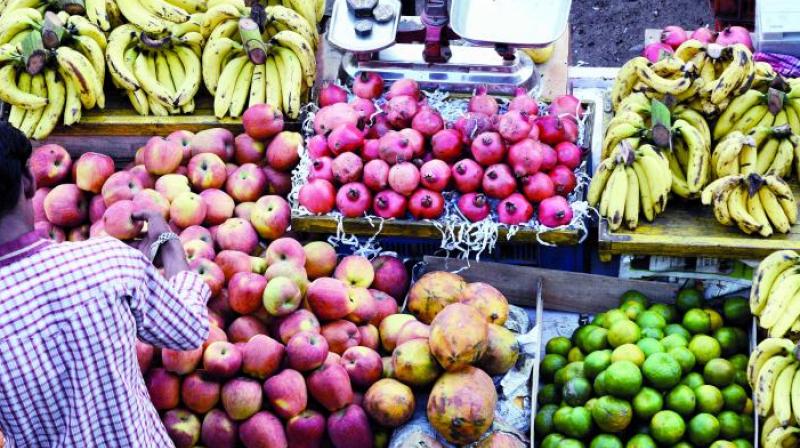Hyderabad: Fruit seasons impacted by climate change
Atmospheric pollution has now made inroads into fruits as well.

Hyderabad: Climate change, which alters rain and temperature pattern, could adversely change the taste of fruits.
Horticulturalist N. Harinder said seasonal changes have impacted the fruit seasons. “Jamuns were summer fruit, with May being the peak consumption season. It is common to find them in large quantities being sold nowadays. These fruits mature in July, coinciding with rains. But they are now more likely to be affected by fruit borer pests which make the fruits unfit for consumption,” Mr Harinder said.
Mangoes get easily affected by climate change. “Mango trees flower in December and January. If heavy rains occur flowers get damaged and if temperatures rise above normal, like what we see now, flowering can be impacted,” said Dr A. Bhagwan, senior scientist and head of the Fruit Research Station.
He added that climate change has made it conducive for the growth of pests and bacteria which affect the fruits. Mr Harinder, who manages his own orchard, said, “With climate change coming into the picture, pests thrive and attack the fruit, forcing farmers to use pesticides. The pesticides drive away butterflies and bees which are essential for pollination thus kick-starting a chain of low productivity and recurring pest attacks.”
Atmospheric pollution has now made inroads into fruits as well. Research has shown that orchards near highways and roads could be affected by lead, oxides of sulphur and nitrogen and carbon from exhausts of vehicles. These could get deposited on fruits and could affect their physiological health.
‘Black Tip’ disorder a disease that affects mangoes is common to orchards located near brick kilns. “Tissues at the tip of the mango get black and disintegrate due to carbon monoxide and sulphur dioxide,” said horticulturist Ratna Charry. The affected area turns black and sunken, and the inner tissues turns soft with a dark brown substance secreting from the tissues.
Dull-coloured and small fruits could be indicative of pollution taking a toll on the fruit health, as suspended particulate matter could be getting deposited on the leaves, which perform the major task of photosynthesis.
"A plant can only have so much capacity to absorb carbon dioxide in the air. In a highly polluted environment, plants absorb more of the pollutants," said Dr Ravi Shankar of Indian Institute of Horticulture.

